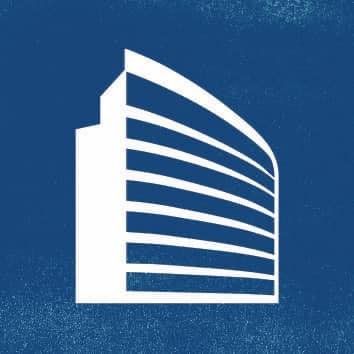预约演示
更新于:2025-05-07
S1PR4
更新于:2025-05-07
基本信息
别名 EDG6、Endothelial differentiation G-protein coupled receptor 6、endothelial differentiation, G-protein-coupled receptor 6 + [8] |
简介 Receptor for the lysosphingolipid sphingosine 1-phosphate (S1P). S1P is a bioactive lysophospholipid that elicits diverse physiological effect on most types of cells and tissues. May be involved in cell migration processes that are specific for lymphocytes. |
关联
6
项与 S1PR4 相关的药物作用机制 EDG6激动剂 [+2] |
在研机构 |
在研适应症 |
最高研发阶段批准上市 |
首次获批国家/地区 美国 |
首次获批日期2023-10-12 |
作用机制 EDG6调节剂 [+3] |
在研适应症 |
最高研发阶段批准上市 |
首次获批国家/地区 美国 |
首次获批日期2010-09-21 |
作用机制 EDG6激动剂 [+1] |
在研机构 |
原研机构 |
非在研适应症 |
最高研发阶段临床3期 |
首次获批国家/地区- |
首次获批日期1800-01-20 |
160
项与 S1PR4 相关的临床试验NCT06424067
A Phase II Study of Fingolimod in Patients With Non-Small Cell and Small Cell Lung Cancer
This is a single-institution, open-labeled study using fingolimod (FTY720/Gilenya) in patients with non-small cell lung cancer (NSCLC) and small cell lung cancer (SCLC) who have progressed on chemo-immunotherapy. The study design will be a 6 patient safety lead-in with 2 cohorts of patients for efficacy analysis where fingolimod 0.5 mg will be taken orally once daily.
开始日期2025-05-01 |
NCT06521762
Etrasimod for Immune Checkpoint Inhibitor Diarrhea and Colitis
This is a randomized, double-blind, placebo-controlled, two-arm phase 2 study of etrasimod plus corticosteroids versus placebo plus corticosteroids for the treatment of IMDC CTCAE v5.0 grade ≥ 2 due to ICI therapy alone (α-PD-(L)1 monotherapy or combined with another ICI, such as α-CTLA-4 or α-LAG-3) or ICI plus an oral tyrosine kinase inhibitor that in the opinion of the treating physician requires treatment with corticosteroid-based immunosuppression and does not require immediate secondary immune suppression, such as vedolizumab or infliximab (or equivalent).
IMDC is one of the most common Immune Related Adverse Events (irAEs) from treatment with ICI. Current guidelines recommend steroid treatment for IMDC CTCAE grade ≥ 2, which requires temporary or permanent cessation of ICI therapy. Corticosteroids may interfere with the anti-tumor activity of ICIs and are therefore not co-administered. Strategies are needed to both reduce the dose and duration of corticosteroids needed for IMDC treatment and minimize the duration off ICI therapy before re-administering ICI (for those patients in whom it is deemed safe to rechallenge).
IMDC is one of the most common Immune Related Adverse Events (irAEs) from treatment with ICI. Current guidelines recommend steroid treatment for IMDC CTCAE grade ≥ 2, which requires temporary or permanent cessation of ICI therapy. Corticosteroids may interfere with the anti-tumor activity of ICIs and are therefore not co-administered. Strategies are needed to both reduce the dose and duration of corticosteroids needed for IMDC treatment and minimize the duration off ICI therapy before re-administering ICI (for those patients in whom it is deemed safe to rechallenge).
开始日期2025-03-01 |
申办/合作机构  Yale University Yale University [+1] |
NCT06553027
Phase 3, Randomized, Double-Blind, Placebo-Controlled Multicenter Study of CVN424 in Parkinson's Disease Patients With Motor Complications
This is a randomized, double-blind, placebo-controlled, multicenter study in participants with Parkinson's disease (PD) with motor fluctuations. Participants will be randomized to receive once-daily oral doses of either 75 milligrams (mg) CVN424, 150 mg CVN424, or a matching placebo for 12 weeks. Participants who successfully complete this study and retain eligibility/suitability will be invited to participate in a future open-label extension (OLE) study.
开始日期2024-09-20 |
申办/合作机构 |
100 项与 S1PR4 相关的临床结果
登录后查看更多信息
100 项与 S1PR4 相关的转化医学
登录后查看更多信息
0 项与 S1PR4 相关的专利(医药)
登录后查看更多信息
173
项与 S1PR4 相关的文献(医药)2025-03-01·American Journal of Obstetrics and Gynecology
The placenta in fetal death: molecular evidence of dysregulation of inflammatory, proliferative, and fetal protective pathways
Article
作者: Bernacchioni, Caterina ; Seidita, Isabelle ; Bloise, Enrrico ; Petraglia, Felice ; Donati, Chiara ; Abati, Isabella ; Mecacci, Federico ; Nardi, Eleonora ; Serena, Caterina ; Castiglione, Francesca
2025-02-01·Journal of Advanced Research
Blocking S1P4 signaling attenuates brain injury in mice with ischemic stroke
Article
作者: Park, Seungbae ; Sapkota, Arjun ; Cho, Hyunkyung ; Lee, Seunghee ; Gaire, Bhakta Prasad ; Lim, Chaemin ; Basnet, Nikita ; Choi, Ji Woong ; Kim, Donghee ; Lee, Bong Yong ; Lee, Joo-Youn ; Kim, Sanghee ; Been, Jae Hui
2024-12-01·Computational and Structural Biotechnology Journal
Analysis of transcription profiles for the identification of master regulators as the key players in glioblastoma
Article
作者: Ivanov, Sergey M ; Tarasova, Olga A. ; Ivanov, Sergey M. ; Lagunin, Alexey A ; Lagunin, Alexey A. ; Tarasova, Olga A
11
项与 S1PR4 相关的新闻(医药)2025-04-22
·药时空
2025年4月22日,云顶新耀欣然宣布,就根据香港联交所证券上市规则第18A.12条向联交所所作出的申请,联交所已授出批准,上市规则第18A.09条至第18A.11条不适用于公司的申请。由于相关规则不适用,公司的英文及中文股份简称将不再加上标记“B”,并将于适当时候就删除标记“B”的生效日期另行公布。公司现已符合上市规则第8.05(3)条的市值/收益测试。具体而言,公司具备不少于三个财政年度的营业记录、至少前三个财政年度的管理层维持不变且至少经审核的最近一个财政年度的所有权和控制权维持不变。公司于2025年4月17日的市值超过153亿港元,高于上市规则第8.05(3)条规定的40亿港元。如公司刊发的截至2024年12月31日止年度的全年业绩公告所载,公司于截至2024年12月31日止年度(即经审核的最近一个财政年度)的总收益为人民币706.7百万元(相当于约759.9百万港元),高于上市规则第8.05(3)条规定的500百万港元。因此,公司符合条件根据上市规则第8.05(3)条上市,故联交所批准相关规则不适用于公司的申请。据悉,港交所18A开闸7年,上市的未盈利生物医药公司约70家,但成功“摘B”者仍为其中的少数,目前已有百济神州、信达生物、复宏汉霖、再鼎医药、康方生物等十多家企业已“摘B”,如今又再添1家“摘B”药企,该阵营日渐扩大。移除“B”标记是一家18A生物科技公司发展的重要标志,是基于对其产品研发管线、商业化能力等方面的综合考量。而云顶新耀于2020年10月登陆香港联交所,经过近5年的时间,其在市值和收入等方面终于达到了更高标准,可谓是公司发展史上的又一里程碑。回顾2024,可以说是难字当头,经营为艰,但是云顶新耀却逆势翻盘——全年收入达7.067亿元,同比增长461%,超额完成7亿元既定业绩目标。股价全年涨幅超130%,显著领跑恒生生物科技板块。同时首次实现年度商业化盈利。也正是基于这一优异的表现,其才晋升为一家营收能力和市场表现受到认可的Biopharma企业。云顶新耀是一家专注于创新药和疫苗研发、临床开发、制造和商业化的生物制药公司。拥有两款全球首个超级大单品——一IgA肾病对因治疗药物耐赋康和氟环素类抗菌药物依嘉,前者于2024年5月上市,至年底仅7个月就卖出3.53亿元,后者也营收3.528亿元,同比增长256%,增长势头强劲。此外,云顶新耀第三款上市产品自免超级重磅药物伊曲莫德(维适平)目前已在中国澳门上市,并通过“港澳药械通”布局大湾区市场,去年12月在大陆(维适平TM)和香港(维长宁TM)上市申请已获得受理。公司预计将于2026年获得中国大陆的新药上市批准,并已经启动了位于浙江嘉善工厂的伊曲莫德生产建设项目,项目总投资达7000万元,预计正式投产后伊曲莫德的年产能可达5000万片。在下一代管线的布局方面,云顶新耀一方面加码肾病布局,开发了一种共价可逆BTK抑制剂EVER001,其已展示出同类最佳的潜力,且云顶新耀已于2024年12月宣布EVER001在治疗原发性膜性肾病的1b/2a期临床试验中取得阶段性积极结果。另一方面,搭建端到端mRNA技术平台,通用型现货肿瘤相关抗原疫苗(TAA)EVM14就是基于此平台研发的,该疫苗目前已获得美国FDA IND批准。同时,其还计划于今年上半年向NMPA递交该疫苗的IND申请。▲云顶新耀全球产品管线总的来说,2024年对于云顶新耀来说只是商业化盈利的开始,公司的目标是到2030年实现100亿人民币销售峰值。而这些已上市和在研的产品,将会成为促进其商业化增长的强劲动力。静待后续云顶新耀的市场表现。参考资料:[1] 云顶新耀公司公告等.[2] 映恩生物首日暴涨116%!港股18A企业现反转信号. 第一财经资讯. 2025年04月15日.[3] 重估云顶新耀,三重确定性. MedTrend医趋势. 2025年03月31日.[4] 在寒冬中崛起:云顶新耀的逆袭之路. 建国路128号. 2025年04月02日.[5]港股再添1家“摘B”药企,股价三年涨回10倍,云顶新耀凭什么?. E药资本界. 2025年04月22日.识别微信二维码,可添加药时空小编请注明:姓名+研究方向!
疫苗财报核酸药物上市批准基因疗法
2025-02-25
·云顶新耀
数据证实,经过40周的维持治疗后,伊曲莫德组具有显著的临床和内镜学方面的获益。
伊曲莫德在多个终点方面都显示出强大的疗效,包括黏膜愈合、内镜恢复正常和组织学改善。
安全性数据与已知特征一致,没有观察到新的安全性信号。
云顶新耀(HKEX 1952.HK)是一家专注于创新药研发、临床开发、制造和商业化的生物制药公司,今日宣布其治疗中重度活动性溃疡性结肠炎(UC)的药物伊曲莫德(VELSIPITY®, etrasimod)的亚洲多中心Ⅲ期临床研究的完整维持期数据,在第20届欧洲克罗恩病和结肠炎组织大会(ECCO 2025)上以口头报告形式公布。这是伊曲莫德的亚洲多中心III期临床研究再次在全球消化病领域具有国际影响力的学术会议上发表研究成果,而且是该临床研究维持期数据的首次发表。ECCO 2025于今年2月19日-22日在德国柏林召开。
伊曲莫德是迄今为止在亚洲中重度活动性UC人群中唯一完成大样本随机对照关键性研究的UC先进疗法,ES101002研究结果为伊曲莫德在亚洲中重度活动性UC患者中的应用提供了强有力的证据支持。同时,作为云顶新耀首个自主完成亚太区临床开发的创新药项目,证实云顶新耀稳健的临床开发能力,彰显云顶新耀在亚洲新药研发领域的实力。
本次公布的维持期数据是基于一项在亚洲地区开展的伊曲莫德的多中心、随机、双盲、安慰剂对照III期研究。此项研究是迄今为止完成的最大规模的亚洲中重度溃疡性结肠炎的III期注册临床研究,总计340名既往对至少一种溃疡性结肠炎常规治疗、生物制剂或Janus激酶抑制剂治疗失败或不耐受的中重度活动性溃疡性结肠炎患者进入诱导期且以2:1随机分组分别接受伊曲莫德2mg每日一次或安慰剂治疗12周。完成12周诱导治疗并达到临床应答的患者进入维持期,再次以1:1随机分组接受为期40周的每日一次伊曲莫德2mg或安慰剂的治疗。
维持期数据显示,伊曲莫德组第40周时达到临床缓解的患者比例显著高于安慰剂组(伊曲莫德组48.1% vs安慰剂组12.5%;治疗差异35.9% [95% CI: 22.5%,49.2%],双侧p值<0.0001),差异具有显著的临床意义;所有关键次要终点,即维持期第40周内镜改善(伊曲莫德组61.0% vs.安慰剂组15.0%;百分比差异:46.6% [95% CI : 33.2%,60.1%],双侧p值<0.0001 )和临床应答(伊曲莫德组79.2% vs.安慰剂组35.0%;百分比差异:45.6% [ 95% CI :31.9%,59.3%]),结果也具有显著的临床意义和统计学意义的改善。其他包括黏膜愈合、内镜恢复正常等的次要终点也均达到具有显著临床意义和统计学意义(p<0.0001)的改善,值得注意的是,51.9% 伊曲莫德治疗组患者达到粘膜愈合(定义为中心化阅片内镜子评分≤1 [排除易脆] 且 Geboes 指数评分<2.0 ),而安慰剂组仅有 8.8%的患者达到该终点(双侧 p 值<0.0001)。同时,维持期治疗显示了伊曲莫德良好的安全性,安全性数据与已知特征一致,没有观察到新的安全性信号。
罗永庆
云顶新耀首席执行官
我们非常高兴地看到,伊曲莫德维持期数据的积极结果在世界权威的炎症性肠病学术会议上进行展示,进一步证实了伊曲莫德作为治疗中重度活动性溃疡性结肠炎(UC)创新疗法的优势。自身免疫性疾病一直是云顶新耀的重点研究领域,我们始终致力于推动伊曲莫德的可及性和应用范围。未来,我们将持续致力于扩大伊曲莫德在亚洲范围的可及性,从而造福更多患者。
吴开春教授
伊曲莫德亚太临床试验
牵头研究者
世界胃肠病学会常务理事
亚太消化病学会秘书长
兼常务理事
中华医学会消化病学
分会副主任委员
中国人民解放军第四军医
大学附属西京医院
作为目前唯一在全球Ⅲ期ELEVATE临床试验中证实对孤立性直肠炎有疗效的药物,伊曲莫德在治疗中重度活动性溃疡性结肠炎的亚洲多中心Ⅲ期临床研究结果中,诱导期和维持期的治疗均取得了积极结果。这种新一代选择性S1P调节剂通过口服、每日一次的治疗方案,可快速起效,达到临床缓解,并显示其对于深度愈合的积极作用,显著提高了内镜恢复正常和粘膜愈合的患者比例,助力患者早日达标。期待未来伊曲莫德可以惠及更多溃疡性结肠炎患者。
作为云顶新耀自身免疫性疾病领域的重磅产品,伊曲莫德是一款创新的先进疗法,通过口服、每日一次的治疗方案,可快速起效,并达到临床缓解、实现黏膜愈合。伊曲莫德已于2024年在新加坡、中国澳门商业化上市,新药上市申请也已获得中国内地、中国香港的正式受理,并被纳入粤港澳大湾区内地9市临床急需进口港澳药品医疗器械目录(2024年),已在广东佛山开出大湾区内地首张处方。
关于伊曲莫德(VELSIPITY®, etrasimod)
伊曲莫德(VELSIPITY®,etrasimod)是一种每日一次口服的高选择性鞘氨醇-1-磷酸(S1P)受体调节剂,采用优化的药理学设计,与S1P受体1、4和5结合。伊曲莫德目前已在美国、欧盟、加拿大、澳大利亚、英国、瑞士、以色列以及中国澳门和新加坡获得新药上市批准。
关于云顶新耀
云顶新耀是一家专注于创新药和疫苗研发、临床开发、制造和商业化的生物制药公司,致力于满足亚洲市场尚未满足的医疗需求。云顶新耀的管理团队在中国及全球领先制药企业从事过高质量研发、临床开发、药政事务、化学制造与控制(CMC)、业务发展和商业化运营,拥有深厚的专长和丰富的经验。云顶新耀已打造多款疾病首创或者同类最佳的药物组合,公司的治疗领域包括肾科疾病、感染性和传染性疾病、自身免疫性疾病。有关更多信息,请访问公司网站:www.everestmedicines.com。
前瞻性声明
本新闻稿所发布的信息中可能会包含某些前瞻性表述,乃基于本公司或管理层在做出表述时对公司业务运营情况及财务状况的现有看法、相信、和现有预期,可能会使用“将”、“预期”、“预测”、“期望”、“打算”、“计划”、“相信”、“预估”、“确信”及其他类似词语进行表述。这些前瞻性表述并非对未来业绩的保证,会受到风险、不确定性及其他因素的影响,有些乃超出本公司的控制范围,难以预计。因此,受我们的业务、竞争环境、政治、经济、法律和社会情况的未来变化及发展等各种因素及假设的影响,实际结果可能会与前瞻性表述所含资料有较大差别。本公司及各附属公司、各位董事、管理人员、顾问及代理未曾且概不承担更新该稿件所载前瞻性表述以反映在本新闻稿发布日后最新信息、未来项目或情形的任何义务,除非法律要求。
临床3期临床成功临床结果
2024-12-21
点击蓝字
关注我们
本周,热点不少。首先看审评审批方面,非常值得一说的就有两个,一个是礼来阿尔茨海默病新药多奈单抗在中国获批上市,另一个是信达生物/葆元医药ROS1抑制剂获批上市;其次看研发方面,多个药取得重要进展,其中,诺和诺德CagriSema Ⅲ期减重数据公布,68周减重22.7%;最后是交易及投融资方面,翰森制药以20亿美元授予默沙东口服GLP-1受体激动剂全球独家许可权。
本期盘点包括审评审批、研发和交易及投融资三大板块,统计时间2024.12.16-12.20,包含27条信息。
审评审批
NMPA
上市
批准
1、12月18日,NMPA官网显示,礼来1类新药Donanemab注射液获批上市,用于治疗早期阿尔茨海默病。Donanemab是一种用于静脉输注的药物,每四周注射一次。该产品已经于2024年7月获美国FDA率先批准,用于治疗出现早期症状的阿尔茨海默病成年人,商品名为Kisunla。
2、12月20日,NMPA官网显示,由葆元医药申报的己二酸他雷替尼胶囊(Taletrectinib)获批上市,用于治疗经ROS1-TKI治疗失败的ROS1阳性局部晚期或转移性非小细胞肺癌(NSCLC)成人患者。他雷替尼为新一代ROS1酪氨酸激酶抑制剂(TKI),葆元医药与信达生物共同负责该产品在大中华区的开发和商业化。
申请
3、12月17日,CDE官网显示,云顶新耀引进的伊曲莫德(etrasimod)申报上市,用于治疗中重度活动性溃疡性结肠炎(UC)。伊曲莫德(APD334/PF-07915503)是Arena Pharmaceuticals开发的一款高选择性鞘氨醇-1-磷酸(S1P)受体调节剂。2017年12月,云顶新耀以2.24亿美元的总交易额引进伊曲莫德在大中华区和韩国的独家开发、生产和商业化权利。
临床
批准
4、12月16日,CDE官网显示,东阳光药1类新药HEC169584胶囊获批临床,拟开发治疗非酒精性脂肪性肝炎(NASH)。HEC169584是一款在研THR-β激动剂药物,是该公司AI驱动的药物设计(AIDD)实验室开发的首款在研小分子新药。临床前研究结果表明,HEC169584对THR-β细胞的体外活性高,亦具有改善肝纤维化的潜力。
5、12月16日,CDE官网显示,金赛药业1类新药GenSci122片获批临床,拟开发治疗晚期实体瘤。GenSci122片是一种有效的选择性KIF18A抑制剂,具有显著区别于其他细胞周期和抗有丝分裂药物靶点的抗肿瘤特征,已经于2024年10月在美国获批临床。
6、12月16日,CDE官网显示,武田1类新药Mezagitamab注射剂获批临床,拟开发治疗原发性免疫性血小板减少症(ITP)。Mezagitamab是一种全人源免疫球蛋白IgG1单克隆抗体(mAb),对表达CD38的细胞(包括浆母细胞、浆细胞和自然杀伤细胞)具有高亲和力。武田已经于2024年12月启动了mezagitamab治疗成人慢性ITP患者的国际多中心Ⅲ期临床研究。
7、12月16日,CDE官网显示,和誉医药的依帕戈替尼(Irpagratinib、ABSK011)获批临床,用于治疗FGF19过表达的晚期或不可切除肝细胞癌(HCC)。依帕戈替尼是和誉医药自主研发的一款强效的高选择性小分子FGFR4抑制剂,被开发用于治疗FGF19过表达的晚期或不可切除肝细胞癌(HCC)。
8、12月19日,CDE官网显示,百济神州1类新药注射用BG-C137获批临床,拟开发用于晚期实体瘤患者。BG-C137是一款靶向FGFR2b的抗体偶联药物(ADC),百济神州拟开发该产品用于上消化道瘤种和乳腺癌。该公司研发的靶向FGFR2b的ADC具有差异化抗体骨架,有效载荷为拓扑异构酶I抑制剂,DAR为8。
9、12月19日,CDE官网显示,阿斯利康1类新药AZD6234注射液获批临床,拟开发用于在至少有一种肥胖相关合并症的超重或者肥胖成年人中长期体重管理。AZD6234是一款多肽类药物,为每周一次皮下注射的长效胰淀素受体激动剂。该产品正在国际范围内进行Ⅱb期临床研究,阿斯利康拟开发该产品作为肠促胰岛素不耐受肥胖患者的替代治疗方案。
申请
10、12月19日,CDE官网显示,第一三共1类新药DS-3939a申报临床。DS-3939a是一种靶向TA-MUC1的ADC,其结构由人源化抗TA-MUC1抗体、酶切可切割的四肽连接体和具有高药抗比(DAR)的DNA拓扑异构酶I抑制剂(DXd)组成,正在全球范围内处于Ⅰ/Ⅱ期临床研究阶段。
突破性疗法
11、12月16日,CDE官网显示,烨辉医药1类新药BN104片拟纳入突破性治疗品种,拟用于治疗携带KMT2A重排和/或NPM1突变的复发/难治性急性白血病。BN104为一款新型、高选择性的口服Menin抑制剂。该产品曾获美国FDA授予孤儿药资格和快速通道资格,分别用于治疗急性髓系白血病(AML)和复发/难治急性白血病。
FDA
上市
批准
12、12月16日,FDA官网显示,欧加农的本维莫德乳膏(商品名:Vtama)获批第2项适应症,用于局部治疗2岁及以上儿童和成人特应性皮炎(AD)患者。本维莫德乳膏是一种芳香烃受体(AhR)激动剂,2022年5月,本维莫德乳膏(商品名:Vtama)首次获FDA批准上市,用于局部治疗成人斑块状银屑病患者。
13、12月19日,FDA官网显示,Xcovery Holdings的恩沙替尼(Ensartinib、商品名:Ensacove)获批上市,用于治疗未接受过ALK抑制剂治疗的ALK阳性局部晚期或转移性非小细胞肺癌(NSCLC)成年患者。恩沙替尼是一款新型强效、高选择性的新一代ALK抑制剂,由贝达药业及其控股子公司Xcovery共同开发。在体外试验中,这款抑制剂可以强效抑制ALK的多种突变体。
14、12月19日,FDA官网显示,Mesoblast的Remestemcel(商品名:Ryoncil)获批上市,用于治疗2个月及以上儿童患者的类固醇难治性急性移植物抗宿主病(SR-aGVHD)。Ryoncil是一种通过同种异体骨髓生成的间充质基质细胞,它通过抑制T细胞增殖,和下调促炎细胞因子和干扰素的产生,来调节T细胞介导的炎症反应。
研发
临床状态
15、12月17日,药物临床试验登记与信息公示平台显示,甘李药业启动了GLP-1R激动剂GZR18注射液对比司美格鲁肽注射液的头对头Ⅲ期研究。该研究是一项多中心、随机、阳性对照临床试验(n=1100),旨在评估GZR18注射液对比司美格鲁肽注射液(商品名:诺和泰)治疗经二甲双胍单药或联合钠-葡萄糖协同转运蛋白2(SGLT2)抑制剂或联合磺脲类药物治疗后血糖控制不佳的中国2型糖尿病成年患者的疗效和安全性。研究的主要终点是第44周患者的糖化血红蛋白(HbA1c)水平相比于基线的变化。
临床数据
16、12月16日,住友制药宣布,一款Menin-KMT2A相互作用抑制剂Enzomenib(DSP-5336)用于治疗复发/难治性急性白血病的Ⅰ/Ⅱ期临床试验数据积极。结果显示,在23例KMT2A重排患者中,客观缓解率为65.2%,达到CR加部分血液学恢复的完全缓解(CRh)的患者比例为30.4%。
17、12月17日,拜耳宣布,Ⅲ期QUASAR研究取得了积极结果,该研究旨在评估阿柏西普8mg相较于标准治疗方案阿柏西普2mg(Eylea)在治疗继发于视网膜静脉阻塞(RVO)的黄斑水肿患者的疗效和安全性。该研究在第36周时达到其主要终点,结果显示,在初始月度给药后,阿柏西普8mg每8周给药1次与当前标准疗法Eylea每4周给药1次相比,患者获得了非劣效性的视力提升。
18、12月17日,赛诺菲与梯瓦宣布,其共同开发的在研单抗duvakitug在临床Ⅱb期研究RELIEVE UCCD中达到了主要终点,接受duvakitug治疗的溃疡性结肠炎(UC)和克罗恩病(CD)患者在第14周时达成缓解,并展现出“best-in-class”疗法的潜力。这是首个评估肿瘤坏死因子样配体1A(TL1A)靶向单抗用于CD治疗的随机、安慰剂对照研究。
19、12月18日,智康弘义宣布,高选择性内皮素受体A(ETA)小分子拮抗剂SC0062在一项针对伴有蛋白尿的慢性肾脏病(CKD)开展的2-SUCCEED临床Ⅱ期试验中,其糖尿病肾病(DKD)队列研究结果达到12周的主要临床终点。试验结果表明:有效性方面,SC0062与安慰剂组相比,高剂量组(20mg)能够显著降低白蛋白尿,结果具有临床意义和统计学意义。
20、12月18日,Immutep宣布,其LAG-3激动剂抗体IMP761在含安慰剂对照、双盲的首个人体Ⅰ期临床试验中获得初步积极安全性数据。在健康受试者中,前三个单次递增剂量队列中均未观察到与治疗相关的不良事件。在临床前研究中,IMP761显著降低炎症细胞因子水平,并显示出抑制抗原特异性T细胞介导免疫反应的效果。
21、12月20日,诺和诺德宣布了Ⅲ期试验REDEFINE 1的结果。在第68周时,CagriSema的减肥效果明显优于安慰剂,达到了主要终点。在评估所有患者都坚持治疗情况下的治疗效果时,68周后,接受CagriSema治疗的患者体重减轻了22.7%,而接受cagrilintide治疗的患者体重减轻了11.8%,接受司美格鲁肽治疗的患者体重减轻了16.1%,单独接受安慰剂治疗的患者体重减轻了2.3%。
交易及投融资
22、12月16日,信达生物宣布,和礼来就非共价(可逆)BTK抑制剂匹妥布替尼片(50mg/100mg、商品名:捷帕力)在中国大陆权益达成合作,信达将负责该药的进口、销售、推广和分销工作;礼来将负责研发和上市后医学事务相关工作。该药于2023年1月获FDA批准,并于2024年10月获NMPA批准,单药适用于既往接受过至少两种系统性治疗(含BTK抑制剂)的复发或难治性套细胞淋巴瘤(MCL)成人患者。
23、12月16日,岸迈生物宣布,和Candid Therapeutics达成战略研究合作,以发现和开发自身免疫适应症的新型T细胞接合分子的候选药物。根据协议,假如多个候选药物能够成功进入商业化阶段,岸迈生物有权获得首付款和总计超过10亿美元的开发和销售里程碑付款,以及基于净销售额的特许权使用费。Candid拥有开发和商业化合作项目的全球独家权利。
24、12月18日,翰森制药与默沙东宣布,双方已签署一种在研的口服小分子GLP-1受体激动剂HS-10535的全球独家许可协议。根据协议,翰森制药授予默沙东开发、生产和商业化HS-10535的全球独家许可权,翰森制药将获得1.12亿美元的首付款,并有资格根据候选药物的开发、注册审批和商业化进展获得最高19亿美元的里程碑付款,同时还将获得基于产品销售的特许权使用费。
25、12月19日,复宏汉霖宣布,与Palleon签署合作协议,以开发和商业化人唾液酸酶融合蛋白E-602与利妥昔单抗(汉利康)的联合疗法,用于治疗包括狼疮肾炎(LN)在内的自身免疫疾病。根据协议,复宏汉霖获得E-602在中国独家许可。Palleon有资格获得高达9530万美元的开发和商业化里程碑付款,以及E-602实现中国商业化后的销售特许权使用费。复宏汉霖将负责E-602联合汉利康用于治疗LN在中国的临床开发并承担相应资金。
26、12月19日,Sangamo Therapeutics宣布,与安斯泰来签署一项许可协议。安斯泰来将使用Sangamo开发的专有神经营养型腺相关病毒(AAV)衣壳STAC-BBB。根据协议,Sangamo将负责完成与STAC-BBB衣壳相关的技术转移,而安斯泰来将承担所有研究、临床前及临床开发、监管事务、生产以及最终基因治疗产品的全球商业化工作。Sangamo将从安斯泰来获得2000万美元的预付款,并有资格在五个潜在神经疾病靶点中,通过许可费用和里程碑付款获得高达13亿美元的额外付款。
27、12月19日,BioArctic宣布,已与百时美施贵宝就焦谷氨酸修饰型β淀粉样蛋白(PyroGlu-Aβ)抗体项目达成全球独家许可协议,包括抗体BAN1503和 BAN2803,其中BAN2803抗体还包括BioArctic的BrainTransporterTM技术。BioArctic将获得1亿美元的预付款和高达12.5亿美元的里程碑付款。BioArctic还有权从全球产品销售中获得分级特许权使用费。
END
【智药研习社近期直播】
来源:CPHI制药在线
声明:本文仅代表作者观点,并不代表制药在线立场。本网站内容仅出于传递更多信息之目的。如需转载,请务必注明文章来源和作者。
投稿邮箱:Kelly.Xiao@imsinoexpo.com
▼更多制药资讯,请关注CPHI制药在线▼
点击阅读原文,进入智药研习社~
上市批准优先审批申请上市临床3期ASH会议
分析
对领域进行一次全面的分析。
登录
或

生物医药百科问答
全新生物医药AI Agent 覆盖科研全链路,让突破性发现快人一步
立即开始免费试用!
智慧芽新药情报库是智慧芽专为生命科学人士构建的基于AI的创新药情报平台,助您全方位提升您的研发与决策效率。
立即开始数据试用!
智慧芽新药库数据也通过智慧芽数据服务平台,以API或者数据包形式对外开放,助您更加充分利用智慧芽新药情报信息。
生物序列数据库
生物药研发创新
免费使用
化学结构数据库
小分子化药研发创新
免费使用



